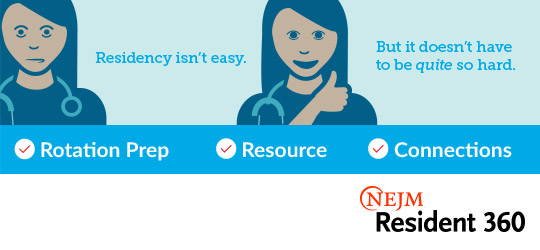August 5th, 2020
Can We Rename Resident Burnout, Please?
Daniel Orlovich, MD, PharmD
It is time we stopped framing resident burnout in a certain way. Let’s be honest, the current descriptions give us nothing to build on.
How is burnout currently framed?
In a strict academic sense, we are guided by clear, globally accepted definitions. We are familiar with Maslow’s Hierarchy of Needs, depersonalization, emotional exhaustion, and reduced personal accomplishment, as well as the various questionnaires and indexes.
However, in the real world, in the hospital and clinics, burnout is inevitably framed as something to be avoided. Burnout comprises three themes: The first says resident burnout can lead one to leave medicine and likely be saddled with debt. The second says that resident burnout might lead to an unhealthy path of addictions. And finally, burnout is framed as the ultimate endpoint — ending one’s life.
To be clear, all those topics are important and they are parts of resident burnout. However, my experience is that this tells us only part of the story. It instructs us on what to avoid and fails to inspire us with meaningful, actionable direction.
All of us in medicine intuitively comprehend this concept. Take for example, when we present a patient. We often invoke the fundamental teachings of pertinent negatives and pertinent positives. Simply, we report what is not there and what is there.
So, what is there, when we talk about burnout?
A simple answer, and one commonly given, is wellness. While the way we frame burnout is too negative, the way we present wellness is too vague. This cursory approach to wellness is akin to filler in our notes, a litany of boxes checked on the review of systems, and rambling when we present. In short, saying a lot while hardly saying anything.
So, I fully comprehend why the new interns, and other residents, aren’t eager to engage in the way that burnout and wellness are commonly presented. I don’t blame them. It is up to those of us whose interests include burnout and wellness work to present it a different way.
Let’s consider a new approach
My introduction to the concept of wellness preceded my acknowledgement of the official term. As an intern, I leaned forward in the stuffy computer lounge and zipped up my new navy fleece. I sighed as I noted that I was only 12% done with the modules. Then, I noticed a fellow intern stand up, grab his black backpack, and walk out of the room. How did he finish so quickly?
Is that the meaning of wellness — to finish orientation modules more quickly? Not quite. I must admit, that would be nice. But what I am saying is that my co-intern found a way to process and organize information quickly. And, that day in the computer lab was my first exposure to this talent, one that I deeply admire.
I saw first-hand, specifically, what organization meant. Instead of espousing generic benefits, like “work-life balance,” my co-intern showed me the concrete tangible aspects of wellness. Clinically, he was a tour de force. He would arrive after I did in the morning and still get done with rounding before I did. He was able to present in a methodical, coherent, and insightful manner. He anticipated questions and answered in a thoughtful way. While I was scrambling to update my notes he was enjoying a warm breakfast burrito and casually looking up studies. He carried an aura of appropriate confidence and found the humor in situations.
One day after signout, when he picked up that black backpack, I asked him if he had plans for the rest of the day. “I do,” he said. “I’m going apple picking with my girlfriend.”
At that moment, I realized he had wellness figured out. While my mind was stuck in avoiding the negative aspects of burnout he was reaping the rewards of a positive approach. He didn’t need to convince me — he was living proof. It was self-evident. A prestigious pedigree, a competitive specialty, stacks of publications, time to visit his family, and, yes, enough time to pick apples with his girlfriend.
My final take
When I tell people I’m interested in resident burnout, invariably the discussion turns to the negative aspects. In my experience, these are well known — but unconvincing. Then I usually pause for a bit. I ask them to name the upsides, the advantages, the benefits they’ve experienced first-hand from habits that lead them to be well. I make it a point to avoid the word wellness. Instead, I want to hear what that vague concept specifically means to them. While there are common foundations of wellness, how it is applied to each person is unique.
Wellness is a competitive advantage in our ever-competitive medical training: It applies to test-taking, applying to specialties, residencies, fellowships, places of employment, receiving evaluations, and interacting with staff. Wellness restores the awe we experienced when we wrote our personal statements. Wellness allows us to recognize, really recognize, the profound meaning and privilege we share in taking care of another human being. Wellness is a performance boost. And, for the sake of our own humanity, as humans, it is a basic saving grace.
Allowing us to pick apples with our loved ones.
Interested in a new take on resident burnout? After a two year-grant I distilled up-to-date practical solutions from over about 275 studies in an easy to read book here.





… oh, and please buy my book – here is the link.